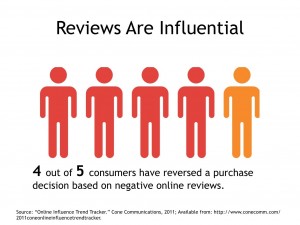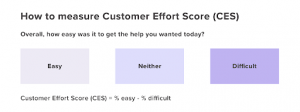When it comes to holiday retail marketing, digital isn’t the be-all and end-all. Columnist Lewis Gersh says marketers need to use intent data to reach consumers at home in ways that go beyond digital.

There’s a critical error we tend to make in marketing for retail these days, particularly around the holidays: We have a tendency to put too many eggs in the digital basket. Brands and retailers make the mistake of focusing on driving online customers to online stores.
You’ve experienced it: You shop for a pair of shoes or a new chair on some retailer’s site. For the next six to eight weeks, you’re retargeted with ads for the shoes or the chair, both of which will inevitably click through to a page where you can easily make a purchase (even if you’ve already made one).
I’m not going to say this isn’t effective. We all know retargeting works. But we also know that the click-through rate (CTR) on any given display ad, no matter how well it’s targeted, is around 0.1-0.2 percent on a good day! Spending the majority of your time and effort on marketing for a 0.1 percent CTR doesn’t sound like the best use of either time, money or effort — especially when you’ve got actual merchandise to move.
This is especially true during the holiday season, when many retailers make up to 30 percent of their annual revenue between Thanksgiving and Christmas. But while the stakes are higher in terms of moving product at this time, they’re lower in terms of winning lifetime customers.
Holiday shoppers aren’t buying for themselves. They make purchases for family members, friends and co-workers, and they just want their purchases to arrive in time for the big day.
Interestingly, it’s in the weeks following Christmas — Dec. 26 through Jan. 15 — that marketers have the opportunity to win lifelong shoppers. But mid-November through Christmas? That’s a different game, and it’s all about getting customers to shop at your store instead of a competitor’s.
Marketers have an incredible toolkit with which to do this today, but they focus so much on digital that they’re excluding many offline channels. In my humble opinion, taking such a myopic view of retail marketing is a colossal mistake. I think most would agree with my 90/90/90 rule, which I developed based on what’s common knowledge in today’s retail market:
- 90 percent of intent data is now available online on a 1:1 basis.
- 90 percent of meaningful purchase decisions are made at home.
- 90 percent of purchases are not made online.
While digital advertising is more accurate and data-driven than ever before, and while consumers choose meaningful purchase decisions on things they want to buy at home, they still tend to go to non-e-commerce purchase channels to buy them. This is true of just about any purchase that requires even the slightest amount of consideration, from Bluetooth speakers to a new car.
And those decisions made at home? I guarantee you that they’re not made exclusively on internet-connected devices.
To me, that’s a clear indication that we should be attempting to reach consumers at home, but in ways that go beyond digital. Communication needs to go beyond display ads and into more tangible media.
Consider the research phase — or Zero Moment of Truth (ZMOT), if that’s your thing — in your own retail purchases. Mine usually starts with an online search or reviews on sites like CNET or Amazon, but it also will typically include:
- magazine articles from publications like Consumer Reports.
- sales circulars from department or specialty stores.
- coupons or offers received in the mail.
- advice from friends/crowdsourcing.
I’d wager that most shoppers take a similar path. So if we look at the 90/90/90 theory again, and take that actual “ZMOT” behavior into consideration, it’s pretty easy to see where the missed opportunities are.
Use intent data to reach consumers at home
Marketers should be leveraging intent data to reach users at home and influence their decision to choose a product and purchase channel in which to buy it. And that marketing communiqué needs to happen in non-digital as well as digital media.
If retailers want to ensure that consumers shop with and buy from them, they need to differentiate and give people the ability to choose their store over the competition, and that’s going to require more than display advertising. Marketers should consider using everything they’ve learned about their customers, from their own first-party data and intent data, to reach them in ways that are relevant, meaningful and likely to drive action.
That may mean a foray back into print advertising, some of which can be purchased programmatically today. It can also mean creating a high-impact, tangible media piece that is personalized and contains a valuable offer for a discount or gift with purchase. Or it may mean a beautiful, glossy, magazine-like catalog, delivered at a just-right moment.
All of these options are available to marketers today, and they create a multitouch experience for shoppers that differentiates and helps retailers stand out from the crowd. The bonus is that if marketers do a great job with campaigns like these, they could win the sale and the customer.
I say it all the time, but only because it’s true: Digital isn’t everything. It’s important, but there are many important moments in life when people aren’t online. The 90/90/90 rule drives that home (pun intended.)
Make the most of those critical offline moments — and create new ones — and you’re likely to come out ahead this holiday season.
Some opinions expressed in this article may be those of a guest author and not necessarily Marketing Land. Staff authors are listed here.
Marketing Land – Internet Marketing News, Strategies & Tips
(57)






